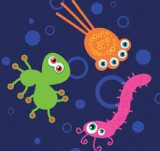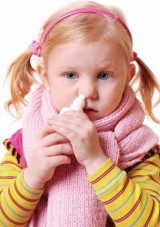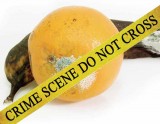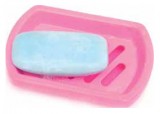It's time for children to get their hands dirty with Jonathan Lear's brilliantly bizzare take on the world of micro-organisms...
Germs and bacteria seem be a source of fascination for children of all ages. Perhaps it’s the idea of a secret world hidden from the naked eye that intrigues, knowing that there are organisms out there, on us, and all around us. Or maybe it’s just that a lot of children like things that are a bit disgusting!
This topic is based loosely on the year 6 QCA unit ‘Micro-organisms’ but contains ideas that could be used in many different ways. Just so you know, I haven’t included any AT1 in this topic as good opportunities for including investigative work are presented clearly within the QCA unit itself.
 Generate your own germs…
Generate your own germs…
Micro-organisms give us a brilliant opportunity for some imaginative personification, and the creation of germ characters is an engaging introduction to the topic. It gives children a sense of ownership, and is also a clever hook from which to hang later learning.
This activity uses the Domestos bleach adverts as a starting point. These commercials are available on YouTube; one of the best is labelled ‘Millions of germs will die’. In the advert, a disgusting looking germ character sings poetically about diarrhoea and vomit. Lovely. For some reason, the advert is always a hit with children and allows them to start thinking about creating their very own character.
There are many different ways in which the children could make their germs; one of my favourites is borrowed from the Eric Carle website (eric-carle.com). In the photo and video gallery, there is a step by step guide that explains how he achieves the illustrations for his books. The artwork is done on tissue paper, upon which the children paint with water based paints. Because the tissue dries quickly, the children are able to add layers of paint, varying shades, patterns and textures to suit their germ designs. When they have completed several sheets of germ coloured tissue, they cut out the desired shapes and piece together their characters. Additional features can be collaged on top, or added with fine black felt tips. When the germs are finished, they are given suitably disgusting names and are now ready for action.
 Don’t forget your food miles…
Don’t forget your food miles…
Why not try creating passports for your micro-organisms? This works really well with food safety. As the children learn about contamination in the kitchen, they can plan a holiday for their bacteria. Their character may start in the fridge, lurking on a piece of uncooked chicken – they may then hop onto the hands of an unsuspecting chef. The chef could then pick up and prepare some salad, allowing our little micro-organism to transfer and spend some time chilling out amongst the leaves. The final destination could be the stomach of an unfortunate customer – warm, dark and moist – the perfect spot for a holiday!
Each stage could be documented in the passport – you could write diary extracts and even have your micro-organism send a postcard home to their mum. As a final note, be wary of becoming too attached to your germ. They are flighty by nature, and only really interested in short term relationships – have fun, and enjoy it while it lasts!
 Investigate the secret life of grime…
Investigate the secret life of grime…
With the children’s army of germs assembled, it is time to find out about some of the terrible things they get up to.
There are a range of different information sources that could be used. The BBC learning zone has some fantastic film clips that include a time lapse film of fruit decaying, investigations into the germs carried on our hands, and a minute long clip about the micro-organisms that live on our skin (not for the squeamish). Go to: http://www.bbc.co.uk/learningzone/clips/Primary/Science/Micro-Organisms
Using these clips, and other points of reference, the children will start to build a picture of the health risks associated with harmful bacteria. The information collected can now be used to add a little background to their germ characters. Where do they live? (On food, skin, inside the mouth, in the stomach?) What is their favourite pastime? (Causing decay? Illness?)
The micro-organisms created by the children are clearly villains. This information could lead to the writing of police reports identifying the crimes committed by these dastardly germs. For example:
Scene of crime: fruit bowl
Victim: Betty the Banana
Nature of incident: In the early hours of Friday morning, Betty the Banana was attacked by a gang of unruly micro-organisms…
Police reports could be turned into scripts for ‘GrimeWatch’ – a germ centred version of the TV show Crimewatch. Presenters could report on crimes, talk to eye witnesses and interview experts who could offer advice to the public on how to remain safe from the vomit inducing villains!
As an additional activity, the children could explore the heroic side of microorganisms through the creation of superheroes. Simple hand or finger puppets could be used to make films in which friendly and harmful bacteria battle it out for supremacy. Can the friendly superheroes change the public’s perception of bacteria or will the villainous germs prevail?!
 Songs from the sewer..
Songs from the sewer..
What better way to remember our learning than a cheery song. This version of Daisy, Daisy is guaranteed to be a firm favourite.
Human, human,
Give me your answer do.
I’m half crazy,
lurking around the loo.
I’ll give you a poorly tummy,
and maybe diarrhoea.
All you need do is a number two
and forget to wash your hands!
Human, human,
I lurk in foodstuffs too.
I can make you vomit,
and food all mouldy and blue.
Some people don’t really like me,
they’d rather I’d be in prison,
But it’s just me, bacteria,
I’m a micro-organism!’
Please note the skilful rhyming of ‘prison’ and ‘micro-organism’. Ivor Novello en route, I suspect.
 Bringing bacteria together…
Bringing bacteria together…
Amidst all the bad press that bacteria get, it is easy to forget they have feelings too. It must be difficult finding love when you not only look repulsive, but spend most of your life hiding under a toilet rim. After some extensive research, I discovered that there is no provision for germs who are looking for that special someone. Unfairly, dating sites seem only to cater for their human hosts.
If a germ was to find his ideal partner, who would she be? Would the perfect match be someone who cleaned their hands meticulously or maybe someone who was a little less circumspect?
Where would the germ like to go on a first date? Is a good sense of humour important (GSOH) or a poor sense of hygiene (PSOH)?
In addition to creating lonely hearts adverts, the children could write their germ a special love song to help them woo potential suitors – a beautiful bacterial ballad.
KS2 Lesson plan: China and Buddism
Ace-English
If your marking doesn’t affect pupil progress - stop it!
Ace-Classroom-Support
Use the bottle-flipping craze to create good school behaviour, not bad
Behaviour Management
